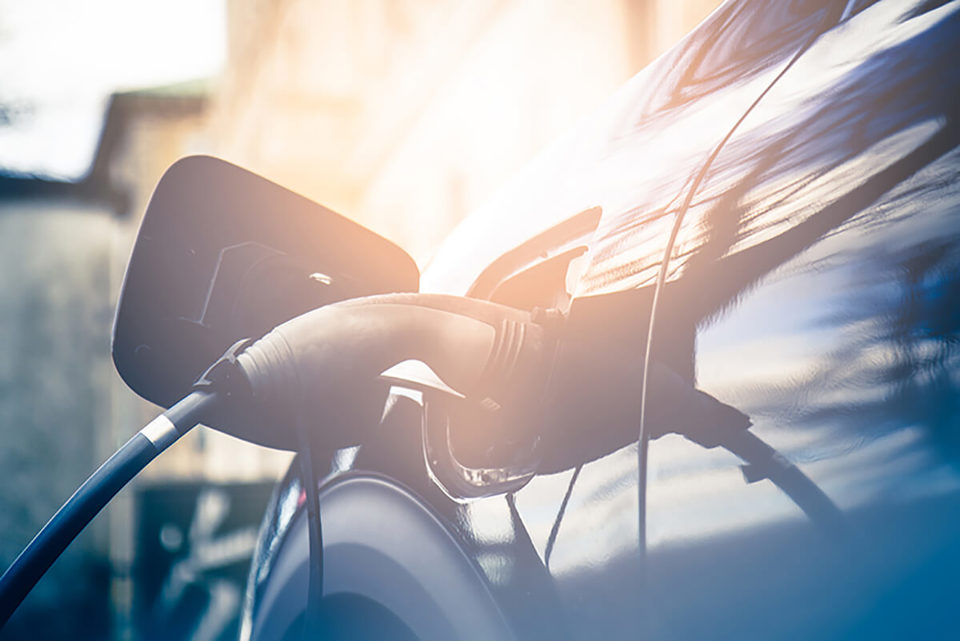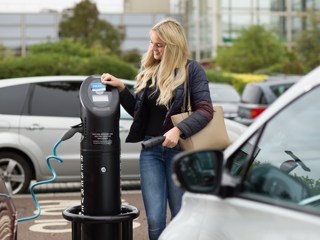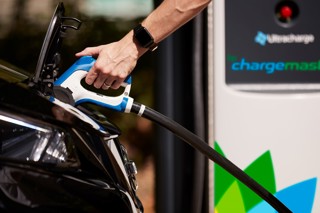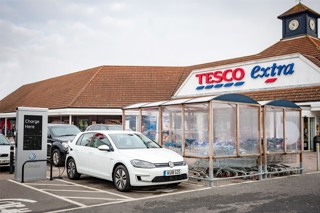How fast electric vehicles (EVs) can be ‘refuelled’ could undermine efforts to provide an adequate public chargepoint network, a new report suggests.
The latest battery-only cars need only five minutes at the quickest ‘rapid’ chargepoints to take on enough electricity to add about 15 miles of range.
However, because of the limitations of their on-board control units, it will take almost all plug-in hybrids an hour or so – or twelve times as long – to achieve a similar thing.
This mismatch means that expensive, high-specification equipment, which is essential to battery-only vehicles on long journeys, could be blocked by other, slower-charging vehicles.
The warning comes in a new report - Development of the UK Public Chargepoint Network - for the RAC Foundation by Harold Dermott.
He argues that until plug-in hybrids have both a greater electric-only range and can accept electricity at a faster rate, chargepoints at motorway service areas should be reserved solely for battery-only cars.
The author identifies two types of recharging behaviour on the public network:
Journey charging – where the primary purpose of being at the chargepoint location is to ‘fill up with electricity’.
Grazing charging – where recharging is secondary to other activities such as shopping, visiting a leisure centre, parking at a railway station.
The report notes that whilst there has been an improvement in the reliability of public chargepoints in the last year - resulting in a reduction of out of service chargepoints from 14.8% (one in seven) to 8.3% (one in twelve) - there are still too many malfunctions.
The study recommends that chargepoint locations for battery-electric vehicles – particularly the larger hubs that are now being trialled - need to offer the services and facilities routinely found at traditional petrol stations, such as: protection from the weather, food and drink facilities, toilet provision and good lighting.
It also says that while the pace at which the public chargepoint network has grown has been impressive, the difficulty of predicting how the electric vehicle market will evolve puts the onus on manufacturers to do more to communicate their future plans to infrastructure providers so that money is not wasted investing in the wrong equipment in the wrong location.
Steve Gooding, director of the RAC Foundation, said: “Ever-faster and more powerful chargepoints might sound like the answer to creating the electric car recharging network we need, but if the cars themselves can only be recharged at a certain rate then at best we’re going to be disappointed and at worst we’re going to waste money. Compatibility between car and charger is key.
“In an area where policy, technology and the market are almost falling over themselves, such is the pace of change, communication between all parties is fundamental. Neither society nor drivers will reap all the potential rewards of greener transport if there is confusion about how it should best be delivered.
“However, there are good signs of progress. Even as we go to print some of the issues highlighted in the report are being addressed. Government is funding seventeen electric vehicle charging hubs through its Go Ultra Low Cities programme, and work is proceeding apace in both the Mayor for London’s chargepoint Task Force and the national Electric Vehicle Energy Taskforce.”
At the end of July 2018 there were 112,000 plug-in hybrid and 54,000 pure battery-electric vehicles registered in the UK.
The Government’s plug-in grant is currently worth up to £3,500 per car and only those vehicles that have a zero-emission range of at least 70 miles are eligible. Plug-in hybrid cars which were previously eligible for the scheme are now excluded.
Gooding concluded: “Ultimately, refuelling electric vehicles should be at least as convenient and fuss-free as filling up with petrol or diesel. As the report makes clear we may be on the right road but we are not there yet.”
























Edward Handley - 10/12/2018 20:20
Most drivers have been infuriated when waiting to fill their cars at a busy service station because a vehicle is parked on the pump and the driver has gone into the attached convenience store and before going to pay for the fuel has wandered round shopping for meals for the next two days and getting a mug of coffee from the machine. Instead of a couple of minutes to pay for fuel they take maybe ten or fifteen minutes. That's when you find someone has stopped behind you and there is nothing you can do. The situation will be even worse with increased sue of pure electric cars which may need 30 to 45 minutes to charge. The driver will plug in and probably go for a meal and and log onto the internet to check their e-mails - and we all know how long that can take. With a fuel pump you have to stand in the cold and wet so re-fueling tends to be quite quick, even if paying for it is not. With battery electric charging and a captive audience the retail opportunities provided will undoubtably expand. Welcome to the brave new world of "charger-rage".